PsychNewsDaily Publishers
100 Summit Drive
Burlington, MA, 01803
Telephone: (320) 349-2484
PsychNewsDaily Publishers
100 Summit Drive
Burlington, MA, 01803
Telephone: (320) 349-2484
Maintaining a clean litter box enhances your cat's comfort, reduces odors, and encourages regular use. Key factors include box size, litter type, placement, and cleaning routines.
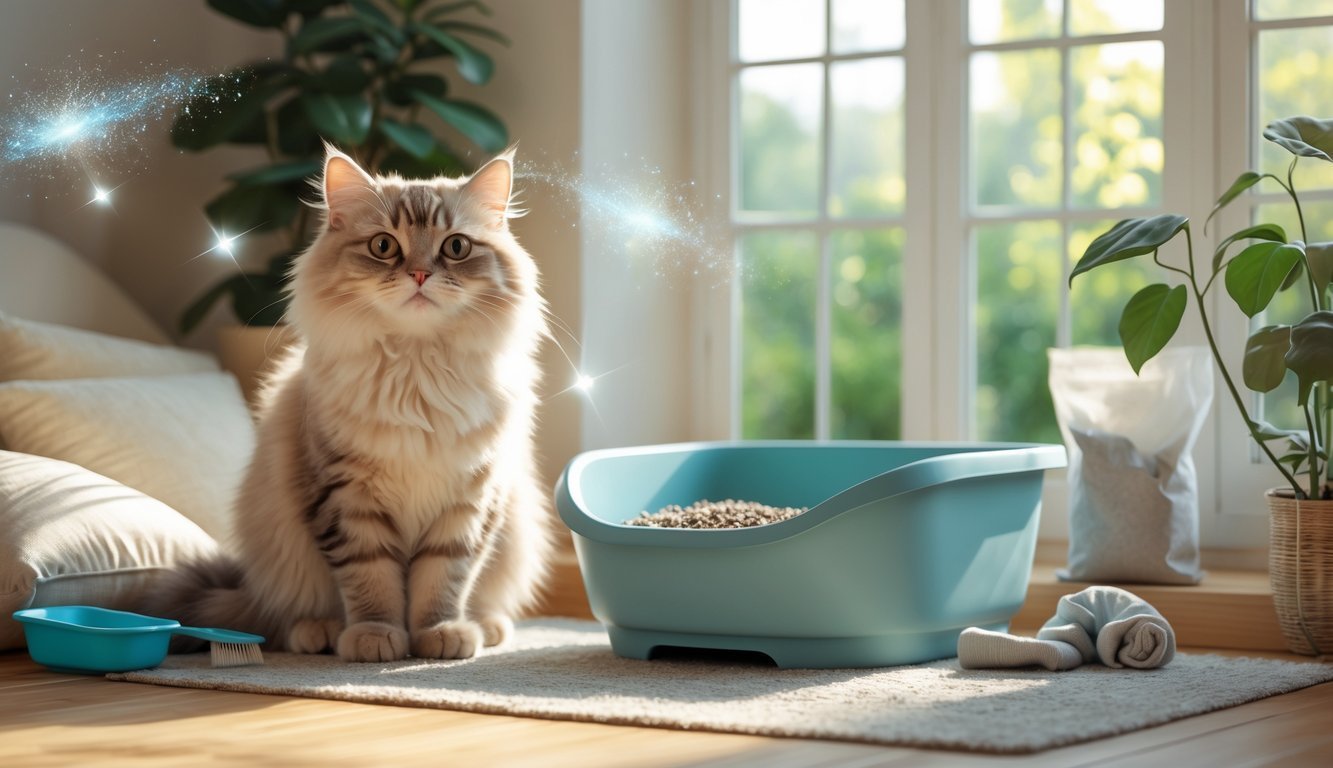
Keeping a clean, comfy litter box is honestly one of the most important things you can do for your cat. When you get the setup right, your cat feels relaxed, and your home doesn’t smell like, well, a litter box.
Just a few small tweaks can make litter box care easier for you and way better for your cat.
No need to spend forever scrubbing or playing guessing games with litter types. If you focus on the right box, the right litter, and a solid routine, you’ll have a spot your cat will actually want to use.
Little changes in where you put the box, how you clean it, and how you control odor can really make life easier.
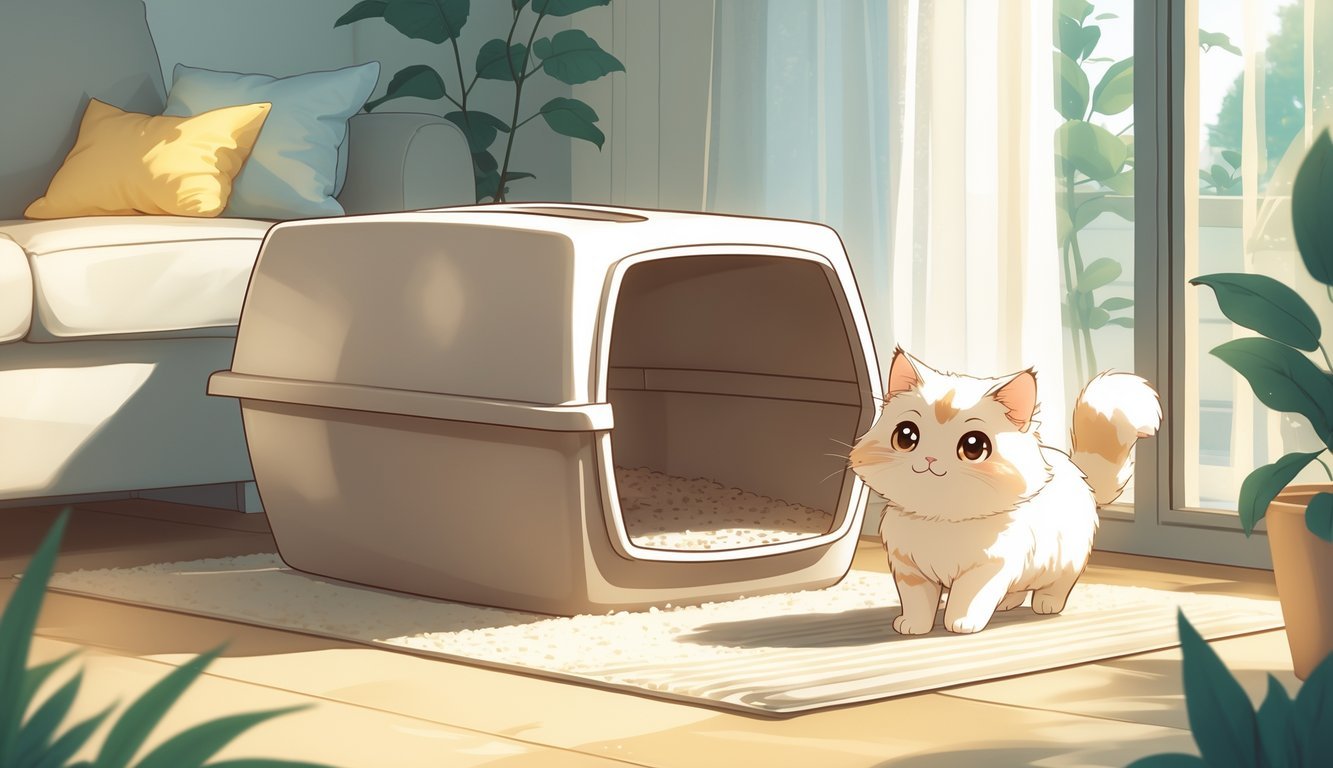
Your cat needs space to turn, dig, and cover their waste. A bigger box gives them room to move without bumping into the sides.
This helps cut down on accidents outside the box.
An uncovered box makes it simple for your cat to hop in and out. Most cats like having a clear view of their surroundings, so open boxes usually work better.
You’ll find cleaning easier with an uncovered box, too. No fiddling with lids—just scoop and go.
If you have a big cat, like a Maine Coon or Ragdoll, go for an extra-large box. Standard sizes can feel way too cramped for them.
Look for sturdy boxes with high sides to keep litter from flying everywhere. A low entry side helps kittens or older cats step in easily.
That way, the box suits cats of all ages.

Clumping litter makes cleaning up every day a breeze. Waste sticks together, so you can scoop it out without dumping all the litter.
That saves you money and keeps things fresher longer.
Unscented litter is usually a safer bet for cats. Strong scents can bother their noses and might even drive them away from the box.
Clumping litter locks in moisture fast, so the smell doesn’t get out of control. Just scoop at least once a day to keep it working like it should.
When you fill the box, aim for about 2–3 inches of litter. That’s enough for digging but not so much that it’s a pain to scoop.
If you go too shallow, clumps stick to the bottom and make cleaning harder.
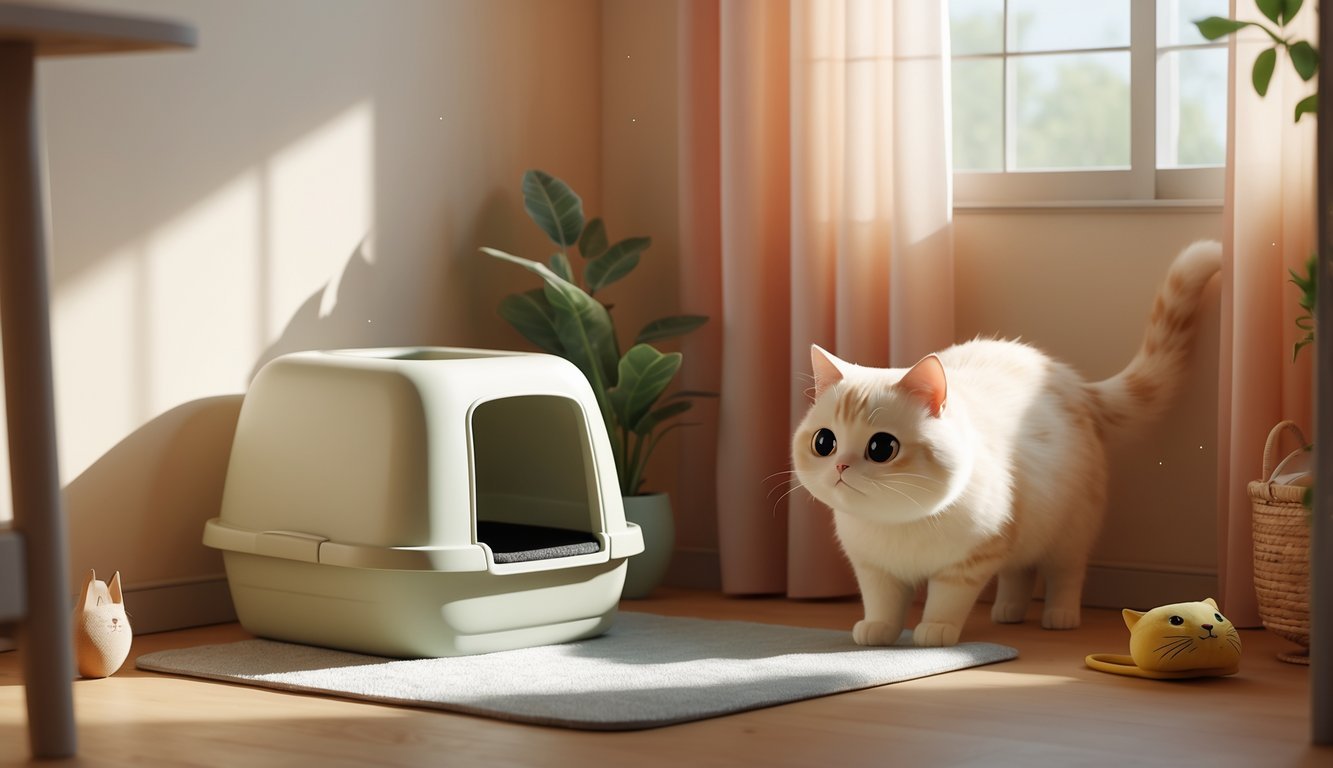
Your cat wants privacy when they use the litter box—just like you do. If you put it in a busy hallway or noisy room, your cat might avoid it.
Pick a quiet spot that doesn’t get much foot traffic. Spare bedrooms, laundry rooms, or tucked-away corners usually work well.
Keep the box away from food and water bowls. Cats don’t want to eat near their bathroom, and putting them too close can cause problems.
Make sure your cat can easily reach the box. If it’s hidden behind stuff or in a room they never visit, they’ll find another spot.
Good airflow matters, too. A fresh, airy space helps with odor and keeps things pleasant for everyone.
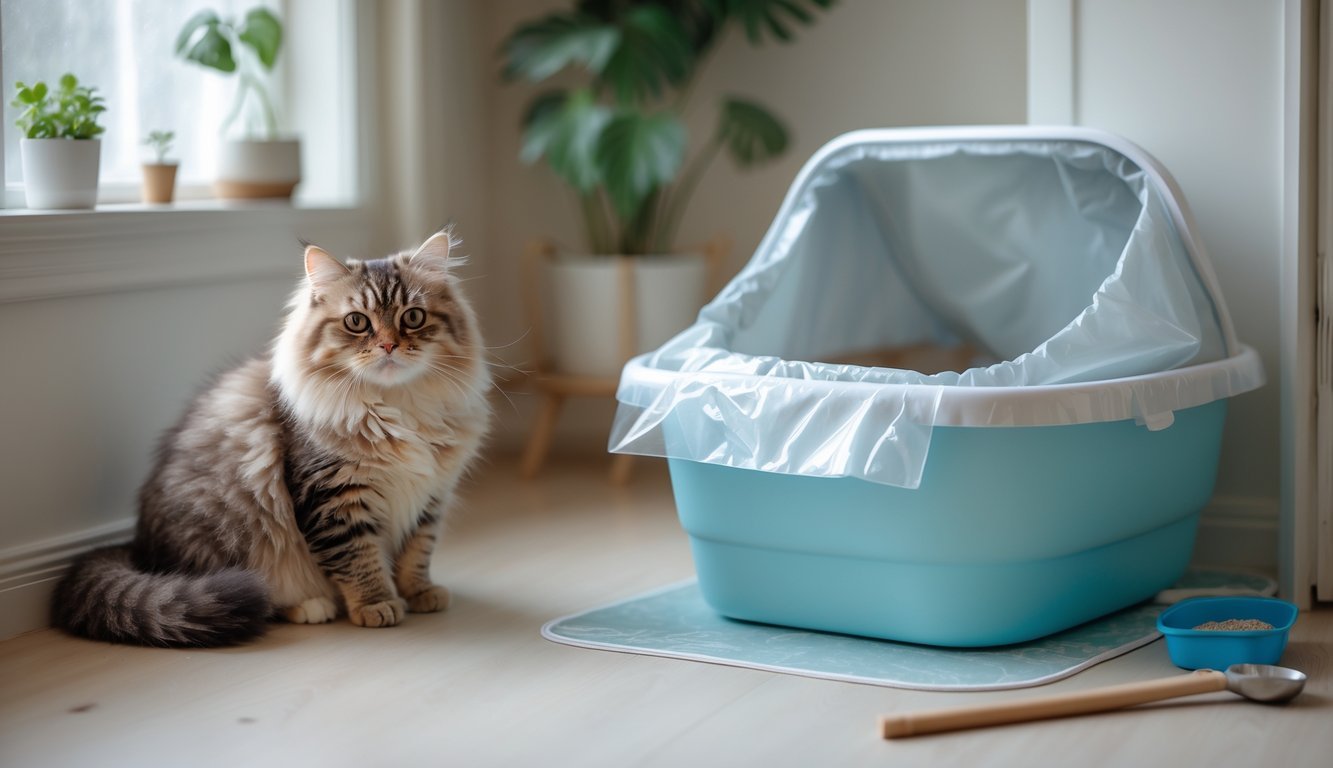
A waterproof liner makes cleaning up way less of a hassle. It blocks messes and smells from sticking to the box, so you spend less time scrubbing.
Lots of liners have drawstrings, so you can just lift everything out in one go. That’s super helpful if you hate dealing with a messy box.
Not every cat likes liners, though. Some scratch right through them, and then litter gets under the liner anyway.
Try different brands or thicker liners if your cat is a scratcher. Heavy-duty trash bags can work in a pinch.
If your cat’s cool with a liner, you’ll probably notice less odor and easier cleaning. It keeps moisture from soaking into the plastic, too.
Makes daily chores less annoying, honestly.

Scoop the box every day so waste doesn’t sit and stink up the place. This habit keeps things pleasant for your cat and your nose.
Cats like a clean spot, and if the box is dirty, they might just go somewhere else.
If you’ve got more than one cat, scoop twice a day. More cats means more mess, so it’s worth the extra effort.
Daily scooping makes your weekly cleaning easier, too. Less buildup means you won’t fight with stuck-on clumps.
Odor-control litter helps, but nothing beats just removing the waste each day.

Baking soda is a cheap, easy way to cut down on odors. It doesn’t have a strong scent, so your cat probably won’t mind.
Just sprinkle a thin layer on the bottom of the box before you pour in the litter. That way, it works from underneath without clumping up on top.
It’s safe, non-toxic, and doesn’t add weird chemicals to your cat’s space.
If the box still smells after using baking soda, it’s probably time to scoop more often or do a deeper clean.
Start with a little and see how your cat reacts. Some cats are picky, so less is usually more.
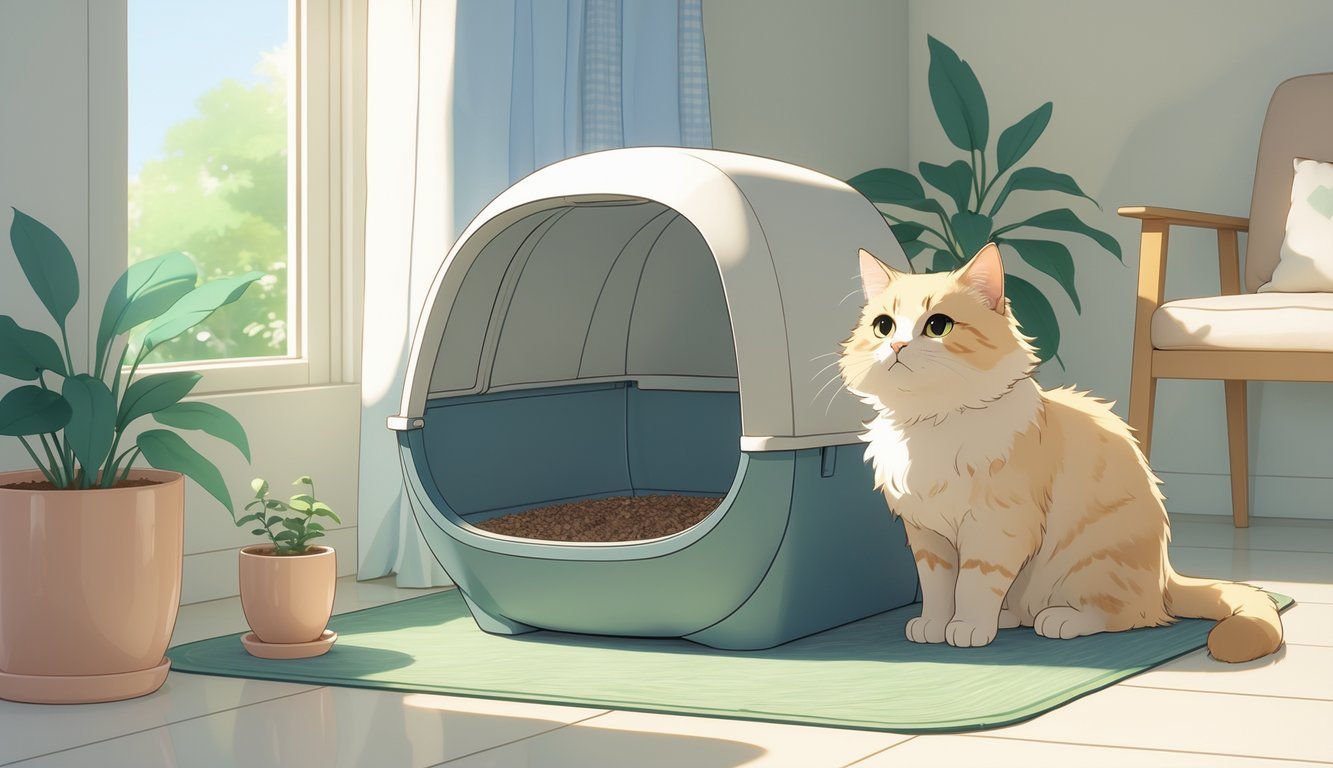
An enclosed litter box can help if your cat wants privacy. Some cats just feel safer when walls block out distractions.
You’ll probably notice less litter scattered outside, too. The walls keep most of the digging mess inside.
Not all cats like covered boxes, though. Some want to see what’s going on around them.
Watch your cat and see what they like best.
If you go with a covered box, make sure it’s roomy enough for your cat to turn and dig. A cramped box just causes more problems.
Enclosed boxes can trap odors if you don’t clean them often, so daily scooping is still a must.
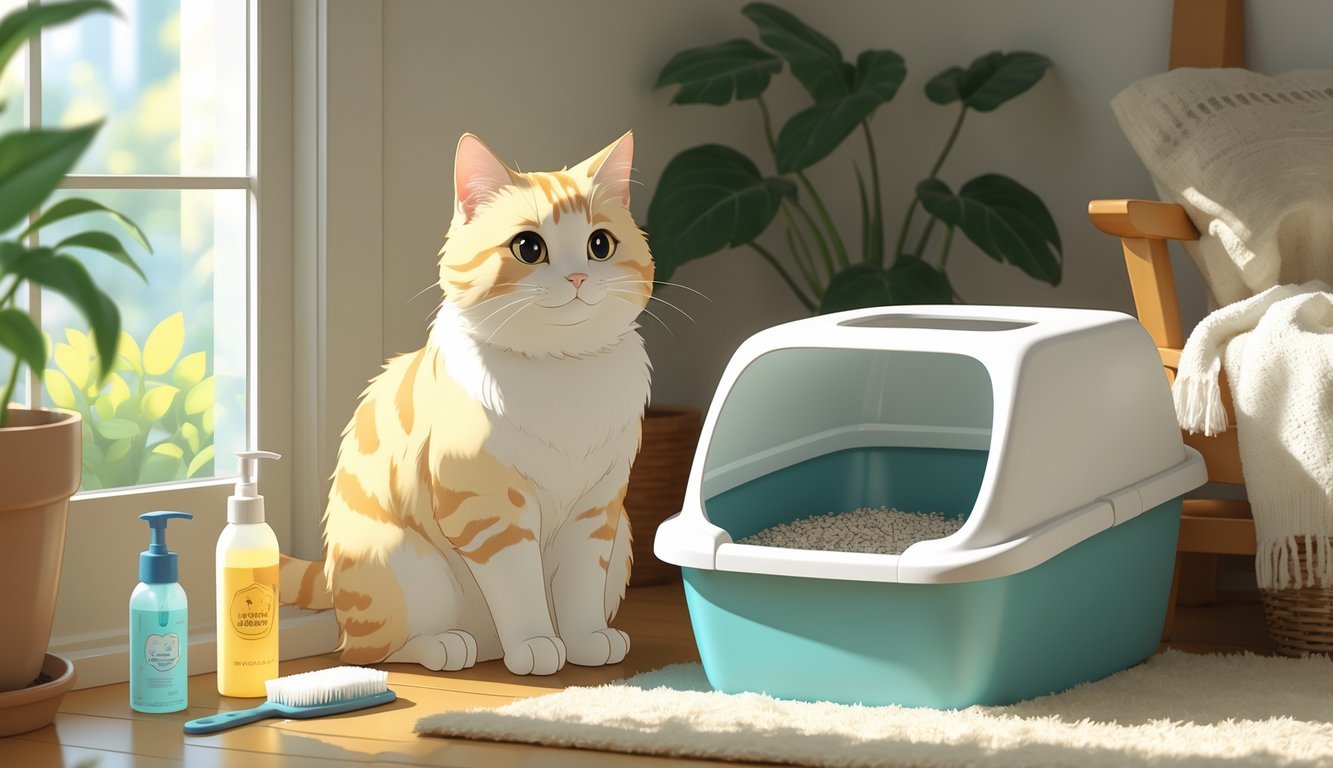
Even if you scoop every day, gunk and odor build up over time. Dump all the old litter once a week and start fresh.
When you empty the box, wash it with warm water and mild soap. Skip the bleach or ammonia—those smells can really bother cats.
Let the box dry fully before you add new litter.
Fresh litter in a clean box controls odors and cuts down on germs. Your cat will be more likely to use it, too.
If you have more than one cat, you might need to clean and refill more often. Just watch how quickly things get dirty and adjust as needed.

Your cat’s comfort depends on the environment and the type of litter you use. Pay attention to their behavior, and you’ll spot problems early.
Small changes can make their daily routine a lot smoother.
If your cat avoids the litter box, something about the setup probably bothers them. Maybe you see them scratching the floor nearby, perching on the edge, or leaving waste just outside.
These signs usually mean the box is too small, too dirty, or in a stressful spot.
Accidents around the house can also mean your cat’s not happy with the box. If they suddenly stop using it, check for health issues first, then look at what’s changed with the box itself.
Even little things, like a noisy appliance nearby, can make them avoid it.
Things to watch for:
If you notice these, tweak the setup before it becomes a habit.
Cats care a lot about scent and texture when picking a bathroom spot. Most like unscented, fine-grain litter that’s soft on their paws.
Strong-smelling litter might cover odors for you, but it can overwhelm your cat.
Texture is just as important. Clay, clumping, silica, and plant-based litters all feel different.
Some cats have a clear favorite, while others don’t care much. If your cat hesitates or scratches a lot, the litter might be the issue.
You can set out two boxes with different litters and see which one your cat picks. It’s a simple way to let them decide.
Once you find a litter your cat likes, stick with it and keep it clean. That helps your cat feel safe and makes accidents less likely.

Your cat’s comfort and health really depend on where you put the box and how well you keep it clean.
A good setup lowers stress, helps prevent accidents, and keeps your home smelling a whole lot better.
Where you put the litter box honestly matters more than you might expect. Most cats want a quiet, low-traffic spot where they can relax and do their business in peace.
Try not to set the box near loud appliances or in busy hallways. I’d also skip any spots close to their food or water bowls—cats can get fussy about that.
If you live with more than one cat, you’ll want to put several boxes in different rooms. The general rule? One box per cat, plus one extra—seems like a lot, but it really helps avoid drama.
Giving each cat their own space makes life easier for everyone. They won’t have to fight over who gets to use the box next.
Think about accessibility, too. Kittens and older cats might not handle stairs or high-sided boxes very well.
Pick a location they can reach without much trouble. That way, nobody has to struggle just to use the bathroom.
Quick tips for placement:
Scooping every day really makes a difference. When you remove waste often, you keep odors down and your cat’s more likely to actually use the box.
If the box gets too dirty, most cats just won’t bother with it—and then you might find surprises elsewhere.
Swap out all the litter on a regular schedule. For most homes, every week or two usually does the trick.
Before you refill the box, grab some mild soap and warm water and give it a quick wash. I’d skip the harsh, strong-smelling cleaners—those can turn cats off from using the box at all.
Here’s a simple routine you can try:
A steady routine goes a long way toward a cleaner, happier space for both you and your cat.